By 1747, Hieu Vo Vuong Nguyen Phuc Khoat restored the pagoda and gave pagoda a kanji sign "Sac Tu Bao Quoc Tu", on the left was inscribed with the words "Quoc Vuong Tu Te nhan ngu de", on the right there was the line of "Canh Hung bat nien ha ngu nguyet cat nhat". There is also an engraving of four seals, a circular seal engraved with the name Quoc Chua Nam Ha. There are still golden plaques and canvases from that time.
In 1776, the temple was badly damaged, falling into ruin. In 1808, Queen Hieu Khuong reconstructed the temple, built the three-arched-gate, created many Buddha statues, cast bell, Bonshō… The Bonshō weighed 826 pounds, was 1,4m high, and 1,2m in diameter still remains. In addition to the reconstruction of the temple, Empress Hieu Khuong asked for 30 acres of rice land and 10 acres of dry land to be donated to the pagoda for cultivating; and she intervened to recover 22 acres of land appropriated under the Tay Son to return to the pagoda. At the same time, King Gia Long decreed to change the name of the pagoda to Thien Tho Tu.
In 1824, Emperor Minh Mang visited the pagoda and took the name "Bao Quoc Tu", because the word Thien Tho refers to Gia Long Emperor's mountain and the mausoleum is Thien Tho Son and Thien Tho Mausoleum. The king held the great altar at the temple on the occasion of the forty-anniversary ceremony in 1830.
By 1858, due to much damage to the temple, King Tu Duc and Queen Tu Du gave money to restore the main hall and other works. During the reign of King Tu Duc and the reign of King Thanh Thai, many large ceremonies were also held in the temple.
According to Thua Thien Hue's web portal: “In 1948, An Nam Buddhist Association moved the Buddhist school from Linh Quang pagoda to Bao Quoc pagoda by Venerable Thich Tinh Khiet, later to become the High Priest of the Association, as Director. Bao Quoc Pagoda has become a training center for talented monks. The next person to continue the education of monks and nuns and serve as the abbot of Bao Quoc pagoda is Venerable Thich Tri Thu. The Venerable Monk also founded the Bodhi school in 1952 which later developed into a system of Bodhi schools throughout the central and southern provinces before 1975. Today, Bao Quoc Pagoda is the place where Hue Buddhist secondary school is located. The pagoda also preserves Ham Long Son Chi, a work of the Diem Tinh hermit in Chinese characters that records the development history of Thuan Hoa Buddhism. "
According to huefestival.com, article said: "Since 1959, in the campus of the pagoda, Ham Long Primary School was established by Mr. Thien An as the principal. In the school year 1961-1962, the head school opened more high school by Mr. Than Trong Hy as the principal. The next principals are teachers: Truong Nhu Thung, Thich Phuoc Hai, Thich Thien Hanh, Thich Duc Thanh, Thich Hai An. The school was originally named Ham Long Private Primary School, later renamed Bodhi Ham Long School and operated until 1975".
Over many generations of pagoda abbots, the temporary pagoda abbess is Venerable Thich Duc Thanh, a Standing Member of the Board of Directors of the Vietnam Buddhist Sangha and also Head of the Board of Directors of the Vietnam Buddhist Sangha of Thua Thien Hue province.

Highlight:
Bao Quoc Pagoda is not only a pure and peaceful place for souls looking towards the Buddha's realm, but also a Buddhist Center of Hue that attracts hundreds of monks to study and cultivate every year, and Bao Quoc Pagoda is also admired by many tourists, as an ancient relic, bearing the meditation characteristics of the ancient capital land.
Bao Quoc Pagoda has an area of about 2 hectares. Looking from the outside into the pagoda is the massive three-arched gate with a few dozen high stairs that still mark the time through the ancient moss.
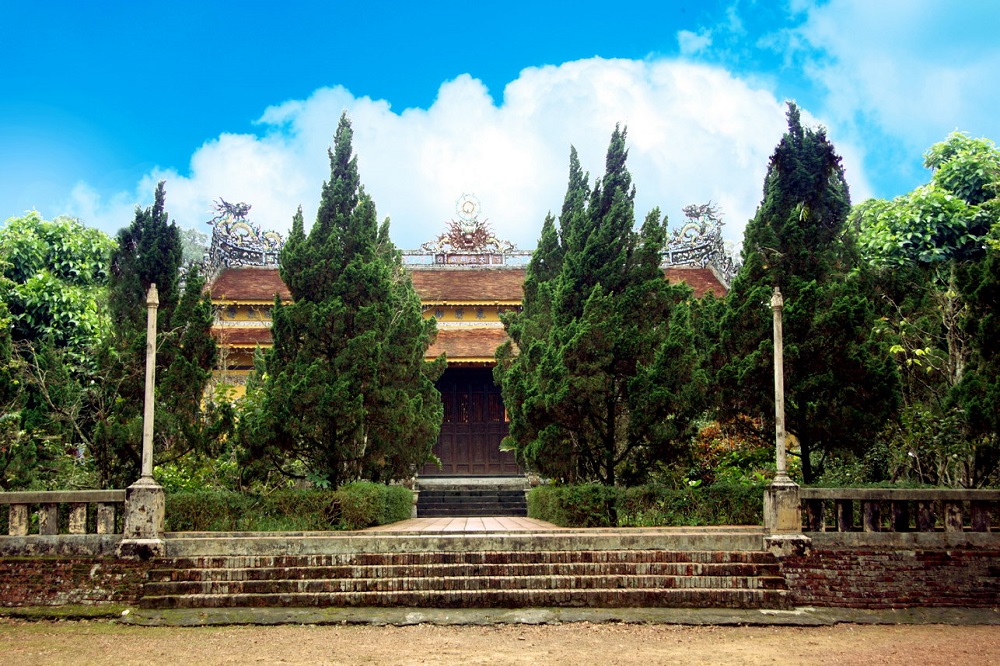
The area outside the main hall
Bao Quoc Pagoda is built in the style of "Khau" letter with the front being the main hall, and behind the main hall on both sides there are two blocks of houses: the guest house and the monastic house, and finally the back house. The rows of houses closed into squares look like the word "Khau" in the Chinese character. Right behind the three-arched gate is a large courtyard with shady green trees to create a sense of relaxation and purity. The space in the middle is the garden. This style of architecture has created a quiet, airy space, with light and fruitful flavor to the rows of houses.
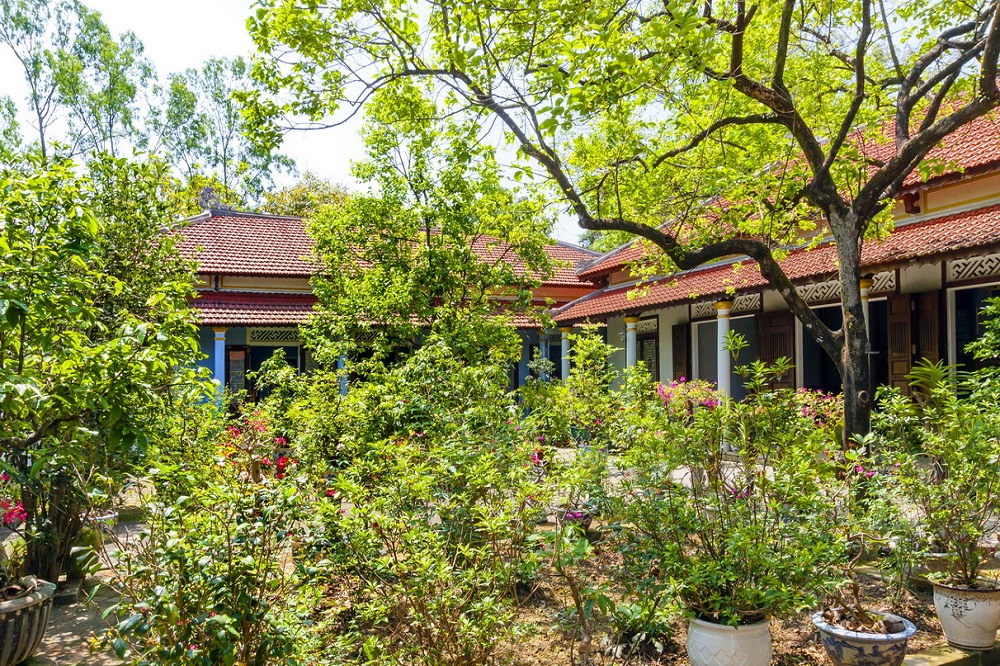
Cool and quiet space
The main hall of the pagoda is built according to the architecture "double-roofs, double-house", which is a traditional architectural style of Vietnam with three compartments and two wings with elaborate decorations, the pillars and walls are all decorated with crockery pieces or dragon motifs. The Buddha statues worshiped in the main hall are placed solemnly in the glass frame. Between worshiping the Three Worlds Buddha, the Buddha Shakyamuni and the two noble men Ca Dua, A Nan. The two sides worshiped the Bodhisattva of Qianji and the Bodhisattva of Tibet.
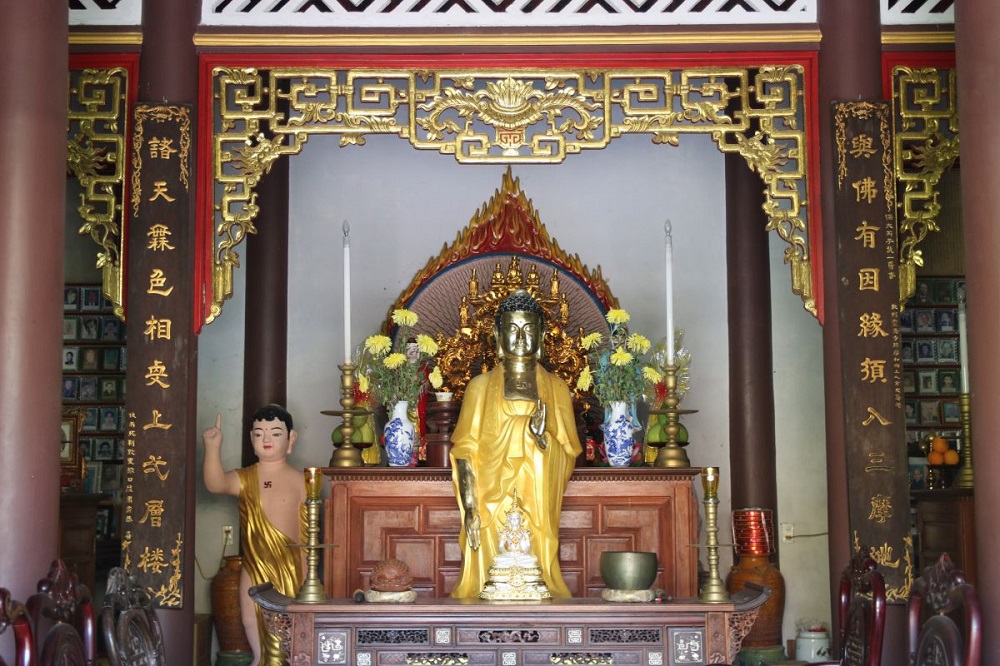
The worshiping area inside the main hall
In the area of Bao Quoc pagoda, there is also the Statue of Bodhisattva, behind the pagoda, is the tower of the ancestors, the tower of Mr. Giac Phong - the founder of this ancient pagoda. Around the pagoda are perennial green trees with wide foliage, so it is very cool and quiet.
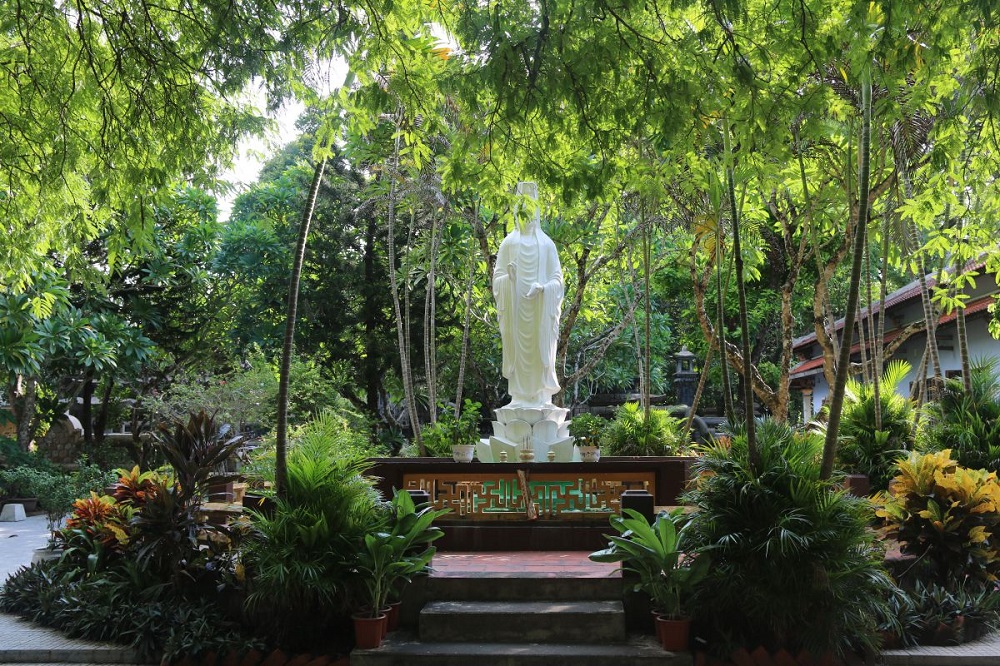
Bodhisattva Statue
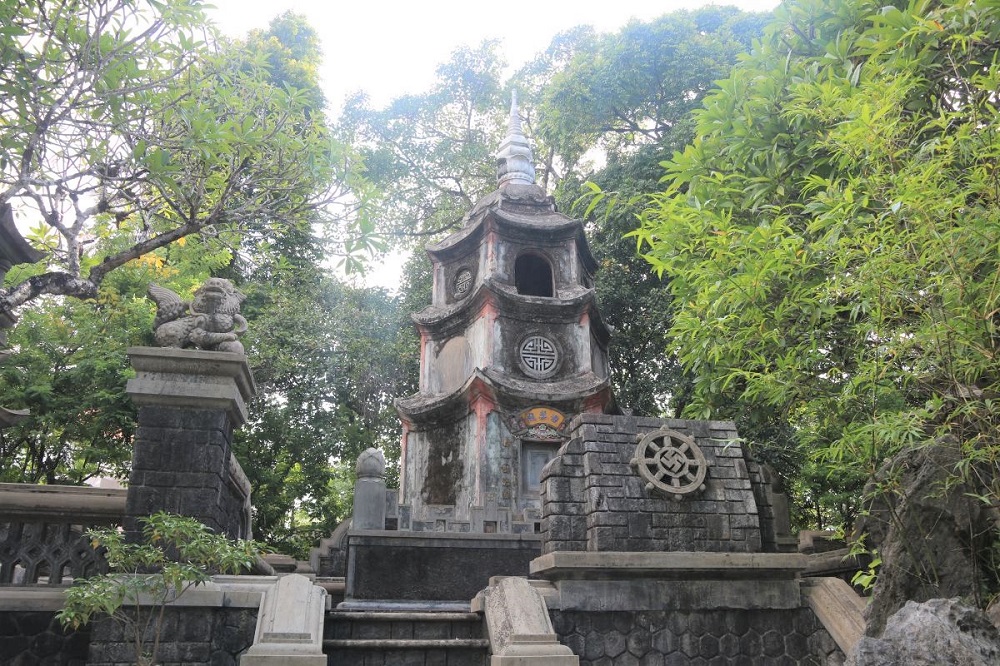
The ancestor tower area was built of stone
In addition, at the foot of the pagoda to the north, there is a famous well, fragrant and sweet water, about 5 to 6 degrees deep, the well springs out like a water cannon, so it is called Ham Long well.

Experience Guide:
If you want to admire the pagoda scene to purify your soul, and leave behind the chaos of daily life, visit Bao Quoc – the famous ancient pagoda of Hue ancient capital…